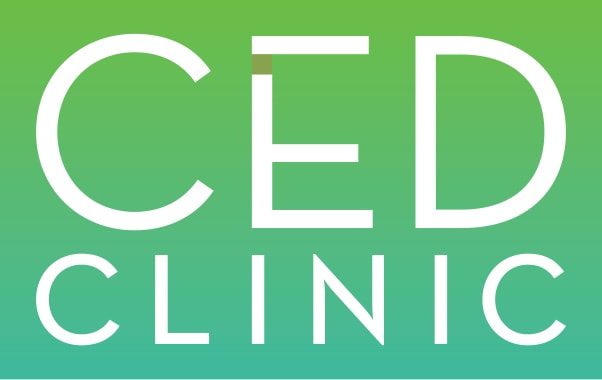Exploring Cannabidiol Alzheimer’s Treatment: A New Hope
Does Cannabidiol (CBD) for Alzheimer’s Treatment seem insane? Futuristic? CBD, the now-famous non-altering compound found in cannabis, is capturing attention worldwide for its potential therapeutic effects in the treatment and management of what can seem like an endless number of illnesses. A recent paper, “Alzh eimer’s disease, aging, and cann abidiol treatment: a promis ing path to promote brain health and de lay aging” has turned the spotlight on the complex interplay between aging, Alzheimer’s disease (AD), and potential treatments like CBD that can influence brain health and delay the overall aging process, Alzheimer’s disease (AD) and age-related cognitive decline. Many recent studies suggest that CBD may play a powerful role in neuroprotection and the promotion of brain health. This post explores the nuanced relationship between CBD, Alzheimer’s disease, and the aging brain, highlighting five key impacts of CBD that could help delay the onset of cognitive impairments and improve quality of life for those affected.
Does it Really Work? HOW?
….here are 5 specific mechanisms that this stuff works:
1. Inhibition of Reactive Oxygen Species (ROS) Production
One of the primary drivers of Alzheimer’s disease and general brain aging is called oxidative stress. Oxidative stress occurs when there’s an imbalance between the production of damaging free radicals and the body’s ability to fend them off with antioxidants (this is why consuming foods high in antioxidants, such as fruits, vegetables, and whatever product happens to be the latest fad claiming they are “rich in antioxidants”). CBD has demonstrated potent antioxidant effects that help neutralize harmful free radicals in the brain, and throughout the body. This action helps to maintain nerve health and healthy functionality, which is essential for slowing down the progression of neurodegenerative disorders like AD.
2. Inhibition of Fatty Acid Amide Hydrolase (FAAH)
We are all born with an endocannabinoid system, the most widespread communication system in the body. CBD influences the endocannabinoid system by inhibiting (slowing down/blocking) an enzyme called fatty acid amide hydrolase (FAAH), which breaks down anandamide, one of the natural cannabinoids in our bodies. When the body is flush with higher anandamide levels, this enhances neuroprotection, decreases inflammation, and improve our body’s ability to handle stress. (Did you know: anadamide is the body’s “bliss” molecule? The happier we are, the more likely we are to be flush with anandamide. The more stressed, the less anadamide. THC (yes, that THC) is almost identical to anandamide.) The presence of CBD, as with higher levels of anandamide, works to boost the body’s endocannabinoid system, which then has the ability to further benefit managing symptoms of stress, depression, pain, loneliness, and other aspects of aging and slowing the progression of neurodegenerative diseases. It’s a cycle of healthy, helpful body communication!
3. Activation of the Wnt/β-catenin Signaling Pathway
CBD activates a signaling pathway called the “Wnt/β-catenin” pathway, vital for regulating nerve cell function and promoting neurogenesis (growth of nerves). This action is crucial for maintaining and forming new connections between nerves (called “synaptic connections” and helps to combat the synaptic deterioration that is commonly observed in Alzheimer’s disease. Boosting the Wnt/β-catenin signaling pathway can counteract the synaptic loss and neuronal dysfunction we see happening more and more as we age.
4. Modulation of Calcium Homeostasis
Calcium is crucial for all nerve signaling in the body and it is also vital for the overall health of all cells, but when calcium is dysregulated, it can lead to neurodegenerative diseases. CBD helps to regulate intracellular calcium levels, preventing overload and petering-out that can lead to neuronal damage. By maintaining calcium homeostasis, CBD supports the survival and health of brain cells. By maintaining nerve health generally, it can help to prevent the degenerative changes that contribute to cognitive decline, when they build up over time.
5. Neuroinflammatory Reduction
Chronic neuroinflammation is a hallmark feature of Alzheimer’s and is associated with the progression of cognitive decline. CBD’s powerful anti-inflammatory properties can significantly reduce the activation of microglia and the production of pro- inflammatory cytokines in the brain. By calming these overactive inflammatory processes, CBD helps preserve brain function and protect neurons. If you literally think of inflammation as fire – the foods we eat, the stress we endure, the environments we expose ourselves to, are heating up our bodies. CBD, depending on how its taken, when, how often, and in what doses, can act as a damp cloth, a splash of water, or a fire-extinguisher.
Understanding Alzheimer’s Disease: Causes and Mechanisms
Alzheimer’s disease involves complex interactions of genetic, environmental, and physiological factors. Key genetic mutations in genes like APP, PSEN1, and PSEN2 are linked to Alzheimer’s that is passed from generation to generation, while factors such as age, the APOE4 allele, and lifestyle factors are associated with random, non-familiar Alzheimer’s. A deeper understanding of these factors is critical for developing targeted treatments like CBD.We must understand the mechanisms that underlie the development of the disease process just as we must also understand how cannabinoids work to help. With many systems – we need many specific studies to better understand the details, but we also have to observe macro trends, to grasp what’s actually going on, even before we understand what’s happening under a microscope.
👉 (More visuals at the end of the blog)
The Role of Cannabinoids in Health
Beyond CBD, other cannabinoids like THC, CBN, CBG, and THCV offer a spectrum of health benefits, including anti-inflammatory and neuroprotective effects, each with subtle differences. Understanding which compounds may impact which body systems (your mind, your liver, your metabolism, your muscles, etc) can be the key to taking control over your own health and happiness, when it comes to aging. Each cannabinoid interacts uniquely with the body’s endocannabinoid system, which then influences various other body processes across the cardiovascular, immune, musculoskeletal, nervous, endocrine, and respiratory systems. Just as nutrition and sleep have important for all of these systems and has far-reaching effects, so does the endocannabinoid system.
Measurable Effects on Nerve and Brain Senescence
Aging and neurodegenerative diseases like Alzheimer’s are characterized by several key changes in brain function:
- Cognitive Decline: Cellular aging contributes to reduced memory and cognitive abilities.
- Increased Neuroinflammation: Aging cells promote chronic brain inflammation, hastening neurodegeneration.
- Altered Gene Expression: Age-related changes in gene expression can impact neuronal communication and functionality.
- Accumulation of Protein Aggregates: Older neurons often struggle to clear harmful protein build-ups, leading to further cellular damage.
- Impaired Synaptic Plasticity: Aging disrupts synaptic connections, getting in the way of efficient communication between neurons.
Closing thoughts + a preview of my book on the topic!
Exploring the potential of CBD in the context of Alzheimer’s disease and brain aging not only offers hope for mitigating the symptoms associated with these conditions but also opens avenues for preventative strategies against cognitive decline. Through ongoing research and clinical studies, the nuanced benefits of CBD and other cannabinoids continue to unfold, promising a future where these natural compounds play a crucial role in promoting brain health and delaying the effects of aging.
Chapter 9 of The Doctor-Approved Cannabis Handbook, is titled “Neurodegenerative Diseases: Dementia, Alzheimer’s and Parkinson’s. I spent years pouring over the published literature and the thousands of patients I am privileged to see in clinic, and in this book, I translating the most impressive benefits and the science which best reflected the realities of what I see with the patients I see every day at CED Clinic. If you enjoy this material and the way I simplify complex science, I hope you’ll consider grabbing a copy for yourself!
Here’s a snippet on the second page of the chapter:
Cannabis is thought to assist the flow of nutrition to the brain by improv- ing arterial blood flow by lowering inflammation and relaxing the smooth muscle tissue that lines all arteries. This is done by enhancing the release of a naturally occurring chemical, nitric oxide, along arterial walls (referenced). It can also enhance brain growth factors. Low doses of cannabis molecules initially suppress brain-derived neurotropic factors (BDNF), which are needed to provide nutrition to brain cells.(referenced). When BDNF is suppressed, the brain has a built-in feedback mechanism to increase production. However, when there is an excessive amount of cannabis available, it can handicap brain growth, as this feedback mechanism cannot keep up with the demand.
Cannabis is thought to support the well-being of both the neural sheath and the nerves themselves. For every sequence of nerves, the stimulation of cannabinoid receptors where two nerves come together activates the originating nerve.(referenced). This activation enhances normal cell functions and encourages the nerve to thrive. When your brain is full of healthy nerve connections, it is able to correctly process sensory input, higher cognitive function, and often, deeper analytical skills. It can also foster a healthier response to the buildup of plaque or tangles of proteins in the brain that may be impeding the brain’s ability to function optimally. Ultimately through these mechanisms, cannabis can help orchestrate the reversal of some structural damage and provide an environment that is better able to nourish the cells so that they continue working.
Visuals for these processes










